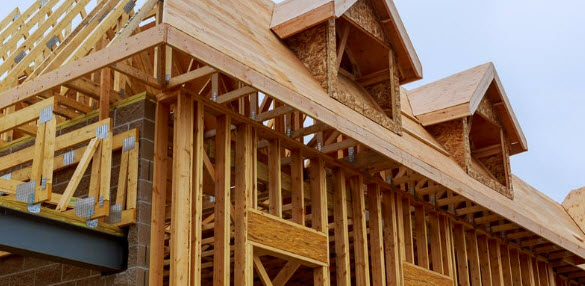Choosing between fixed vs. adjustable rates for your mortgage is one of the most important decisions you’ll make as a homebuyer or homeowner looking to refinance. Both options offer unique benefits, but each comes with potential drawbacks. This guide will help you understand the differences between fixed-rate refinance loans, fixed-rate home equity loans, and Adjustable-Rate Mortgages (ARMs), so you can make the right choice for your financial future.
What is a Fixed-Rate Mortgage?
Benefits of a Fixed-Rate Mortgage
- Stable Monthly Payments
Your payments won’t change over time, providing peace of mind and helping you manage your finances more effectively. - Protection from Rate Increases
With a fixed rate, you won’t be affected by market fluctuations. If interest rates rise in the future, you’ll continue to pay the same low rate. - Good for Long-Term Homeowners
If you plan to stay in your home for a long time, a fixed-rate mortgage can save you money by locking in a low rate.
Drawbacks of a Fixed-Rate Mortgage
- Higher Initial Rates
Fixed-rate loans often come with higher interest rates than ARMs initially. If you’re looking for short-term savings, this might not be the best option. - Less Flexibility
Once you lock in a rate, you’re stuck with it. If market rates drop significantly, you’d need to refinance to take advantage of lower rates.
What is an Adjustable-Rate Mortgage (ARM)?
An Adjustable-Rate Mortgage (ARM) typically starts with a lower interest rate than a fixed-rate mortgage, but the rate changes periodically based on market conditions. ARMs usually have an initial fixed-rate period (such as 5, 7, or 10 years), after which the rate adjusts annually.
Benefits of an Adjustable-Rate Mortgage
- Lower Initial Rates
ARMs often start with significantly lower interest rates compared to fixed-rate loans, which can save you money in the short term. - Good for Short-Term Homeowners
If you plan to sell or refinance before the rate adjusts, an ARM could save you money without the risk of long-term rate increases. - Potential for Lower Payments
If interest rates drop when your loan adjusts, you could benefit from lower monthly payments.
Drawbacks of an Adjustable-Rate Mortgage
- Unpredictable Payments
After the initial fixed period, your rate can increase, leading to higher monthly payments. This unpredictability can make budgeting difficult. - Higher Long-Term Costs
If interest rates rise significantly, an ARM could become more expensive than a fixed-rate mortgage over time.
Fixed-Rate Refinance Loans: When to Choose Them
A fixed-rate refinance loan allows you to replace your existing mortgage with a new one at a fixed interest rate. This option is ideal if interest rates have dropped since you took out your original loan, or if you’re looking for more payment stability.
- Lower Your Monthly Payments: Refinancing to a lower rate can reduce your monthly payments, saving you money each month.
- Lock in Long-Term Savings: A fixed-rate refinance loan is perfect for homeowners planning to stay in their home for the long haul.
- Ideal for Stable Markets: If interest rates are expected to rise, refinancing to a fixed-rate mortgage can protect you from future rate hikes.
Fixed-Rate Home Equity Loans
A fixed-rate home equity loan allows you to borrow against the equity in your home at a fixed interest rate. This type of loan is often used for large expenses like home renovations, debt consolidation, or paying for education.
Pros of a Fixed-Rate Home Equity Loan
- Predictable Payments: Like a traditional fixed-rate mortgage, payments remain consistent, making it easier to manage your finances.
- Lower Interest Rates: Home equity loans generally come with lower interest rates than unsecured loans or credit cards, saving you money over time.
Cons of a Fixed-Rate Home Equity Loan
- Closing Costs: Like your original mortgage, home equity loans may come with closing costs, which can add to the total expense.
- Risk of Foreclosure: Since the loan is secured by your home, failing to make payments could result in foreclosure.
Fixed vs. Adjustable Rates: Which is Right for You?
Mortgage Type | Best For | Advantages | Disadvantages |
Fixed-Rate Mortgage | Long-term homeowners | Stable payments, protection from rising rates | Higher initial rates, no benefit if rates drop |
Adjustable-Rate Mortgage | Short-term homeowners, rising market rates | Lower initial rates, potential savings if rates drop | Uncertain payments after fixed period, risk of higher rates |
Fixed-Rate Home Equity Loan | Homeowners tapping equity for large expenses | Consistent payments, lower interest rates | Closing costs, risk of foreclosure |
Explore your fixed vs. adjustable rate options using your Home Wealth Blueprint, crafted with real-time property data from Home Loan Advisor. Get personalized mortgage options and home wealth strategies that align with your financial profile.
FAQs
- What is better, a fixed or adjustable-rate mortgage?
It depends on your financial goals. A fixed-rate mortgage is better for long-term stability, while an Adjustable-Rate Mortgage (ARM) may offer short-term savings. - What’s the difference between a fixed-rate refinance loan and a traditional mortgage?
A fixed-rate refinance loan replaces your current mortgage, often with a lower interest rate or different term, while a traditional mortgage is used for purchasing a new home. - How do fixed-rate home equity loans work?
These loans allow you to borrow against your home’s equity at a fixed interest rate, with consistent monthly payments. - What are current ARM rates?
Adjustable-Rate Mortgage rates are generally lower than fixed rates initially but can vary based on market conditions after the initial period. - Are adjustable-rate mortgages risky?
ARMs carry the risk of rate increases after the fixed period ends. If interest rates rise significantly, your payments could become unaffordable. - Can I switch from an ARM to a fixed-rate mortgage?
Yes, through refinancing, you can switch from an ARM to a fixed-rate mortgage to lock in a stable interest rate. - What is a good reason to choose an ARM?
ARMs are ideal for borrowers who plan to sell or refinance before the adjustable period begins, or if they expect rates to drop. - Can I refinance a fixed-rate mortgage?
Yes, many homeowners refinance fixed-rate mortgages to take advantage of lower interest rates or to change their loan terms. - How often do ARM rates adjust?
After the fixed period, ARMs typically adjust once a year based on market conditions. - Are fixed-rate home equity loans better than HELOCs?
Fixed-rate home equity loans offer stable payments, while HELOCs (Home Equity Lines of Credit) offer flexibility with variable rates. The best option depends on your financial needs.
Conclusion
Deciding between fixed vs. adjustable rates comes down to your financial goals and how long you plan to stay in your home. If you prioritize stability and long-term savings, a fixed-rate mortgage or fixed-rate refinance loan might be the better option. On the other hand, if you’re looking for short-term savings and flexibility, an Adjustable-Rate Mortgage (ARM) could offer more benefits. Be sure to evaluate the pros and cons of each option carefully to make the best decision for your unique situation.



